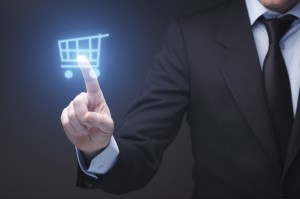
ANDREW CURRY on 18 April, 2014 at 05:04
The digital world has overturned traditional stories about how consumers research and buy. Of course the old story- a tidy universe in which Awareness was followed by Information which led to Desire, or a Decision, and then to Action – was always a marketing fiction. But now marketers and retailers have had to catch up. The route from awareness to purchase – and after, too often neglected by businesses – has become a complex journey that migrates between the digital and the tangible worlds, looping back on itself in a blur of social exchange and information.
We've moved, in other words, from eCommerce, as in electronic, to eCommerce, as in everywhere, as The Futures Company explained in its Future Perspective report – The Future Shopper. As mobile and portable devices proliferate, this trend will only accelerate.
The initial response, at least by some retailers, has been one of despair. How, after all, could Main Street or high street shops survive, with their higher costs, in the face of agile online retailers who were able to operate from cheap locations and quite often able to avoid paying tax. "Showrooming", in which consumers check out goods in stores and then buy, discounted, online, was even used four years ago as the basis for an advertising campaign, by the online arm of a British electricals retailer.
But it turns out that physical retailers can compete with their online competitors, provided they have the right strategy and the right mindset. And to sum this up in a single line, it is this:
"If you're in bricks and mortar, you're in digital too."
Retailers that succeed in this world do so by connecting the digital and tangible, but in a way that maximises their strategic advantages. So, in the US, Safeway's Just4You program offers personalised pricing to loyalty-card customers who access its mobile app within the store. Uniqlo's "magic" digital mirrors, instore, allow customers to see the same item in a range of different colours. And in the UK, the department store chain John Lewis has all but integrated its online offer with its stores, and has been booming in a tough economic environment. In the UK, 'click and collect' has been booming – shoppers like buying online but hate waiting for deliveries – which represents a strategic advantage for stores with a good physical footprint.
As consumers blur the digital and the physical, so retailers that succeed will match them. It's as much about service and service design, as about price. And the retailer that ran its advertising campaign about "showrooming"? It closed down.